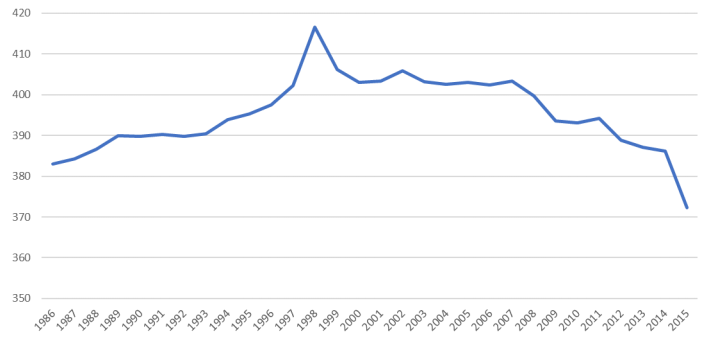Speaking at the Irish Cattle Breeding Federation’s (ICBF’s) Genetics Conference on December 5, the ICBF’s Francis Kearney highlighted that “we are not at the limits in terms of female fertility. Genetic selection is a key tool to help improve fertility at farm level”.
In addition to genetics, “health, management and nutrition all play a key role in the fertility of any herd”, Francis explained.
He added: “We know infertility is still a large cost on dairy farms. We know that selecting for production traits has led to a reduction in the fertility of the dairy herd. So we know genetics has an impact on fertility.
“The heritability of fertility is low and many people said you can’t improve fertility through genetics because of the low heritability. However, we know there is a lot of variation in this trait and that is what we are interested in,” Francis discussed.
- Calving interval (parity one to five);
- Survival (parity one to five);
- Milk (parity one to five);
- Number of inseminations (parity one to three);
- Calving to first service (parity one to three);
- Age at first calving;
- Lifespan.
“A lot of data from many different sources goes into a genetic evaluation to produce the breeding values for cows and bulls,” he said.
“What farmers see on the ground – through using the indexes – is that calving interval is declining, which is what we want to see,” he added.
Going forward with genetic evaluations, Francis explained that “we want the genetic evaluations in the future to account for the compactness of calving”.
He added: “Two cows can have a 365-day calving interval and from a genetics point of view they are the same. However, there could be two months in the difference between when they calve.
“Farmers want their cows to calve early in the season and not at the end. So additional, fertility trait definitions can be used to look at the compactness of calving,” he said.
Therefore, this additional trait information would potentially improve the fertility performance of the dairy herd further.
- Calving season day: The difference in days between a planned start of calving for a contemporary group and actual calving;
- Time of conception day: The difference in days between a planned start of mating for a contemporary group and the last mating that resulted in pregnancy;
- Look at the impact of gestation length on fertility independently.
Francis concluded his presentation by saying that significant improvement in dairy herd performance has already been made in a relatively short period of time.
Highlighting the contribution of the Economic Breeding Index (EBI) to improving dairy herd performance, Francis explained that “EBI only took two generations of selection, which is really very little”.
“Without the good-quality data collected by the farmers, this work would be impossible to do,” he said.

